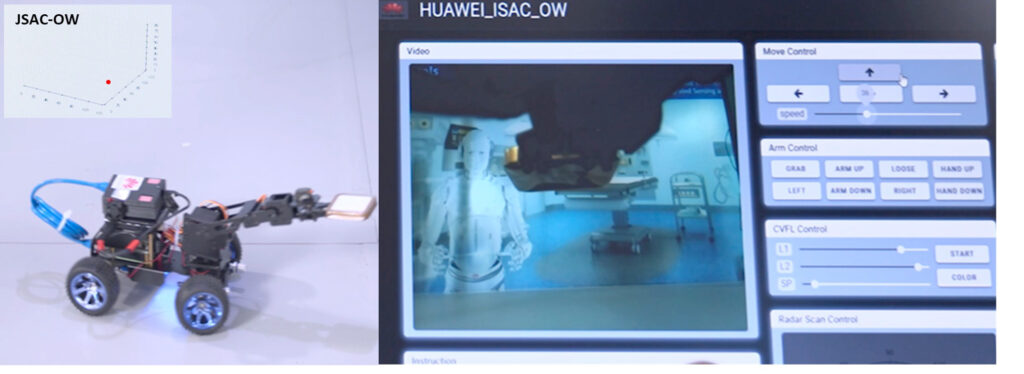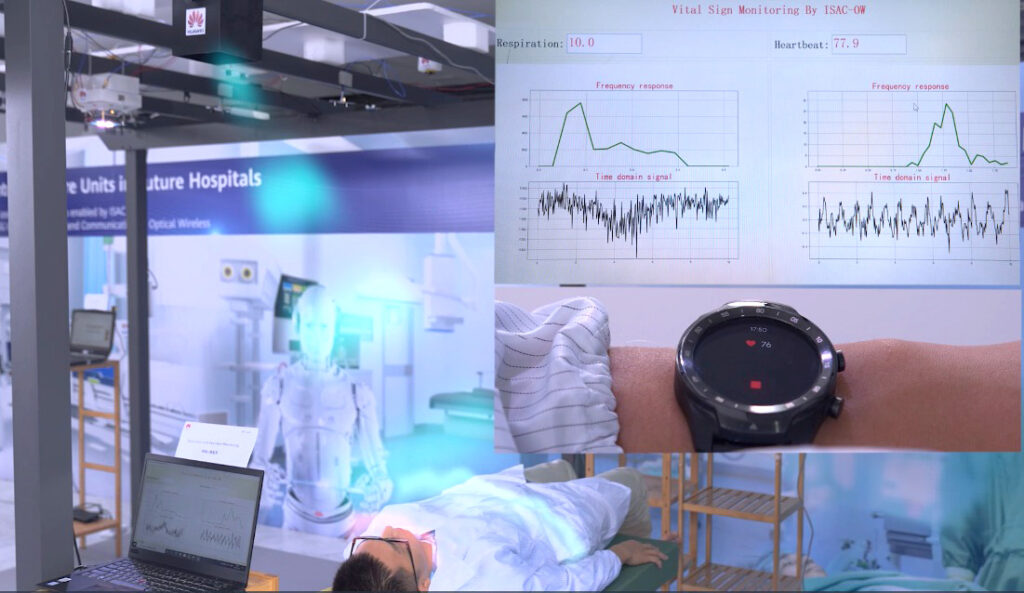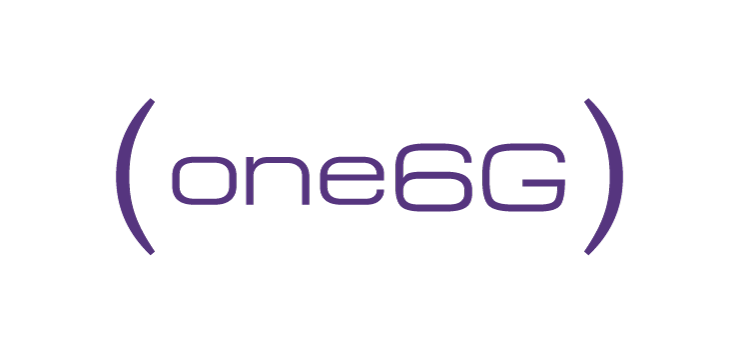Huawei Demonstrated Integrated Sensing and Communication with Optical Wireless at one6G Summit 2021
At the first one6G Summit 2021, Huawei showcased its prototype of integrated sensing and communication with optical wireless (ISAC-OW) as a potential 6G enabling technology. Leveraging visible light and infrared spectrums, high-precision positioning, real-time contactless health monitoring, gesture recognition, and high-speed mobile communication can be realized in a single system, enabling advanced solutions for future 6G scenarios, such as smart hospitals and industrial automation.
Digital transformation is set to be further improved and expanded upon in an era of connected intelligence and applications, such as interactive immersive experience, robots collaboration in automated factories, smart healthcare with real-time sensing, and ultimately autonomous driving will be a reality on a large scale during the next decade. However, this will drive simultaneous network performance requirements in both very high-speed communication and ultra-precision sensing. Huawei has proposed and promoted a technical vision of integrated sensing and communication (ISAC) and innovated the idea from millimeter-wave band and Tera-Hz band up to optical frequency band, i.e., ISAC-OW.
The optical frequency band has nearly unlimited spectrum resources available for communication and sensing. With sub-micrometer wavelengths and high directivity, ISAC-OW is suitable for ultra-high-precision sensing. In particular, since the ISAC-OW system does not generate electromagnetic interference to the various electromagnetic sensitive devices in operating rooms, it can be safely and friendly used in medical environments. When further combined with spectrogram analysis techniques, ISAC-OW can also be conveniently applied to monitor daily health states such as heartbeat, inspiration, or even blood sugar level. On the other hand, with ultra-wide bandwidth and line-of-sight propagation, ISAC-OW has great potential for high-speed, low-latency, and low-power communication, especially in short-range scenarios. As ISAC-OW can be naturally integrated into a lighting system, it is envisioned that every light, every screen can be part of the 6G ISAC-OW system in the future.
The ISAC-OW prototype showcased at the one6G event is an achievement of the innovation in optical wireless from Huawei’s 6G research team. The system can provide high-speed data transmission and high-precision sensing for a large indoor area. With this prototype system, three major functions are demonstrated: 1) simultaneous high-precision localization and high-speed video transmission; 2) contactless real-time monitoring of heartbeat and inspiration; and 3) contactless gesture control of the screen. As shown in Fig. 1, the ISAC-OW system can accurately track the location of a moving robot down to centimeter-level resolution and, at the same time, the high definition videos captured by the robot are transmitted back to the control console in real-time. In Fig. 2, a smart hospital scenario is shown, where a patient’s heartbeat and breath can be monitored in real-time through the ISAC-OW system with an integrated device. The cross-comparison with a commercial smartwatch demonstrates the accuracy of the performance.

Fig. 1 Demonstration of ISAC-OW system for simultaneous high-precision localization and high-speed video transmission.

Fig. 2 Demonstration of ISAC-OW system for contactless real-time monitoring of heartbeat and inspiration.
The presentation highlighted ISAC-OW is an innovative direction for optical wireless requiring continuous research on various aspects including materials, devices, and system technologies. Technical breakthroughs in optical MIMO communications, precise beam control, distributed optical antennas, high-precision structured light modeling, as well as joint architecture design for communication and sensing have been achieved and jointly contributed to the success of the demonstration. Huawei aims to collaborate with partners in this field for joint testing and demonstration of new functions or to explore new applications scenarios. The 6G vision, as stated in their recently published book “6G: The Next Horizon”, is to build a future of Connected Intelligence by 2030, a world where everything is connected, sensed, and intelligent.
